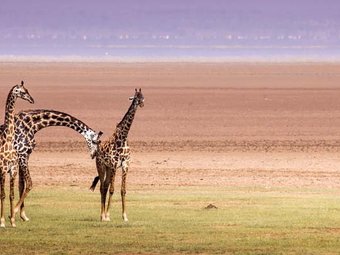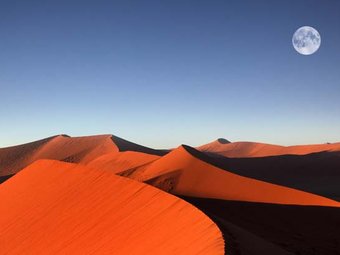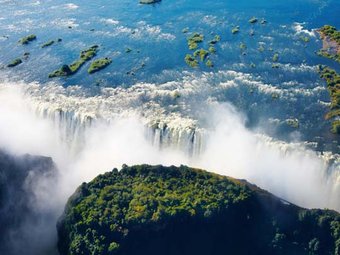The Spirit of Uganda
8 days—The Spirit of Uganda
$2025-3275 USD
pp
Safari summary
Uganda’s star attraction is the endangered mountain gorilla, the bulkiest of living primates, and among the most peaceable. Staring into the pensive brown eyes of these gentle giants, who share 95% of their genes with humans, is as humbling as it is thrilling; no less so when one realises that fewer than 700 individuals survive, divided between Bwindi National Park and the Virunga Mountains. Within Uganda, five habituated gorilla troops – four in Bwindi and one in Mgahinga National Park – can be visited by a total of 30 tourists daily.
It you are ready for a real adventure, then this safari is for you. Let us lead the way to an unforgettable experience.
About this tour
| Tour type | Custom, tailor-made, private | |
| Main focus | Primate trekking | |
| Activity level | Moderate activity | |
| Best months | January, February, June, July, August, September, December | |
| Countries | ||
| Parks |
Itinerary
Day 1
Queen Elizabeth
Day 1: Entebbe Airport – Queen Elizabeth National Park On arrival at Entebbe Airport, you will be welcomed by your SafariWise Africa representative as well as your local guide. A short briefing on the great African adventure and we should be southbound on the road by 10am. On the way we see the royal drum makers stand on the Equator, bargaining at the roadside markets. Descend to the Queen Elizabeth National Park, keeping an eye out for game. This is a wonderful national park, sometimes dubbed ‘the Pearl of Africa or Switzerland of Africa’. Quite simply this fertile equatorial area is especially scenic, with two lakes connected by a channel overlooked by a high peninsula. We will also find volcanic craters, grassy plains and tropical forest. As a result it has one of the highest biodiversity ratings in the world. Hunting exhibits such as stuffed lions, leopard skins, deer heads and elephant’s tusks may still be found adorning some hotels and lodges, but the emphasis is certainly more on shooting with a camera these days. Much of Uganda’s wildlife was poached out in the past, especially elephants, but now the area is protected and elephants numbers are boosted by those entering the park from the Congo, where poaching is still a problem. Several of the National Parks and lakes have changed their names more than once since independence in 1962, and not all maps have kept up with the changes. For example the Queen Elizabeth National Park was called the Ruwenzori National Park for many years until it returned to its royal colonial name. Meanwhile the Ruwenzori Mountains to the north of Queen Elizabeth N.P. were formed into the new Ruwenzori National Park in 1991. The wide bio-diversity of habitats means that Queen Elizabeth National Park contains the most astonishing number of species – almost 100 types of mammal and 606 different birds! The Kasinga Channel alone is said to contain the world’s largest concentration of hippos, but interestingly enough not many crocodiles! Other wildlife includes warthogs, buffalo, rare aquatic sitatunga antelope, giant forest hog, beautifully horned Uganda kob, topi, waterbuck, elephant and leopard. There are no giraffe, zebra, impala or rhino. Kyambura (or Chambura) Gorge on the north-east boundary of the park, is real Tarzan territory with thick treetop canopies and vines dangling down to the soft forest floor. The terrain comes complete with chimpanzees who crash about and chatter high up in the branches. If they don’t feel like being seen, they just keep one step ahead of the out-of-breath terrestrial visitors. The Maramagambo Forest, south of the Kasinga Channel is also home to large numbers of chimps, plus a number of other monkey species. Some rare and odd birds inhabit this park and keen birders come from all over the world to clock up a sighting of the peculiar, pouting shoebill (or whale-headed) stork. This giant bird stands 4-foot high (more than 1 metre) and wears a rather timid expression. This and a myriad of other birds and animals are best viewed from a boat on the Kasinga Channel. The park covers 770 miles ² (1995 km²). Road access from Uganda’s capital city of Kampala is 206 miles (420km). Here is a landing strip at Mweya lodge for light aircraft or a larger airstrip at Kasese town. Accommodation: Mweya Safari Lodge / Jacana Meals: Breakfast / Lunch / Dinner . .
Day 2
Day 2: Mweya Safari Lodge / Jacana Go for an early morning game drive to seek out wildlife, rest during the heat of the day and then go on an evening game drive. The game seen will depend on the season; the Kasenyi plains are good for lion and the Mweya peninsula for a variety of animals. Accommodation: Mweya Safari Lodge / Jacana Meals: Breakfast / Lunch / Dinner . .
Day 3
Queen Elizabeth
Day 3:Mweya Safari Lodge / Jacana An excursion to Kyambura Gorge nearby to track the fast moving and elusive chimpanzees, one of man’s closest relations. The chimp population is quite mobile and viewing is unpredictable but the walk is enchanting. Alternatively go for a nature walk in Maramagambo Forest to see other primates and to visit the bat cave and the blue lake. In the afternoon take a boat cruise on the Kazinga Channel where the wildlife and a vast array of birds come to drink. Kyambura Gorge: The Kyambura (pronounced “Chambura”) Gorge in Uganda’s Queen Elizabeth National Park is home to a remnant population of 16 chimpanzees. The Gorge is a heavily forested, steep-sided, mist-enshrouded river valley, and is also home to black and white colobus monkeys, olive baboons, vervet monkeys, redtail monkeys, and blue monkeys, as well as elephants and lions. But deforestation by farmers at both ends of the gorge has left the chimpanzees isolated from other chimpanzee populations and thus subject inevitably to inbreeding and ultimate extinction. Nicole Simmons, a Ph.D. candidate from Makerere University and the University of Minnesota has planted corridors of fruit trees to expand the habitat of the chimpanzees and allow contact with other chimpanzee populations. She collected seeds from the feces of the chimpanzees (thus ensuring selection of preferred food species) and started the seedlings in a nursery. Great Ape Trust provided $3,000 in 2007 for salaries and supplies for two local field assistants to maintain the nursery, plant the trees, water them, and build fire breaks to protect them. In 2008, The Trust provided $5,000 to help support the monitoring and research of the Kyambura chimpanzees. Maramagambo Forest: Maramagambo Forest is one of the largest forests in Uganda. It is a medium altitude moist, semi-deciduous forest. Characteristics of such forest are increasingly becoming rare in Africa. It has very spectacular lakes and craters. It is the only place in the park where one could find Blue Lakes. Other features of attraction in the forest include; primates e.g. monkeys, Chimpanzees, bush baby, baboons, vervet monkeys, red-tailed monkeys, etc. Due to its location, Maragambo has a high diversity of butterflies. The bat and the hunters cave are other pleasant experiences that the forest offers, and of course some forest birds. Kazinga Channel: The Kazinga Channel in Uganda is a wide, 32km long body of water that links Lake Edward and Lake George, and a dominant feature of Queen Elizabeth National Park. The channel attracts a varied range of animals and birds, with one of the world’s largest concentration of hippos and numerous Nile crocodiles. In 2005, large numbers of hippos were killed in the channel because of an anthrax outbreak, which occurs when animals eat remnants of vegetation in the driest months, absorbing bacterial spores that can live for decades in dry soil. Accommodation: Mweya Safari Lodge / Jacana Meals: Breakfast / Lunch / Dinner . .
Day 4
Bwindi Impenetrable
Day 4: Mweya Safari Lodge / Jacana - Bwindi Lodge Start for Bwindi Impenetrable Forest. Either drive via Ishasha, home of the tree climbing lion, roads permitting, or take the alternative route through cultivated expanses. Accommodation: Bwindi Lodge Meals: Breakfast / Lunch / Dinner . .
Day 5
Bwindi Impenetrable | Virunga
Day 5: Bwindi Lodge Go gorilla tracking (subject to permit availability at time of booking), walking up steep densely forested hills before finally coming across the gorillas camouflaged in the vegetation. An inspiring moment! Tracking in Bwindi requires stamina and can often take most of the day. Alternatively go for a leisurely nature or community walk. Bwindi Impenetrable Forest: In the jungles of Bwindi Impenetrable Forest live half the world’s populations of highly endangered Mountain Gorillas. Visiting them is one of the most emotional wildlife encounters we will ever experience. This pocket of huge primeval forest in the Virunga Mountain range is one of the most biologically diverse areas on earth. It has an eco-system that defines the very essence of the continent and has therefore been designated as a World Heritage Site. The forest floor is damp and laden with leaf mould, matted vegetation and fallen vines, which serve to trip you up as you clamber up and down the slippery slopes in search of a glimpse of the elusive gorillas. Searching up to altitudes of 6,500 feet (1,982 metres) can be exhausting but the rewards are worth it. Of course it may not be as difficult as that, but when visiting the Bwindi gorillas we should be prepared to unleash the explorer in us. Accommodation: Bwindi Lodge Meals: Breakfast / Lunch / Dinner . .
Day 6
Day 6: Bwindi Lodge Either go gorilla tracking again (on payment of supplement at the time of booking subject to permit availability) or go for a guided nature walk in the thick forest rich in birds, butterflies and monkeys. Alternatively go for a stroll around the Lodge or for a community walk. Accommodation: Bwindi Lodge Meals: Breakfast / Lunch / Dinner . .
Day 7
Day 7: Bwindi Lodge – Mihingo Lodge Start for Lake Mburo, arrive in time for lunch. Canoe trip on Lake Mburo. Afternoon game drive. Lake Mburo: It’s a very special place every part of it is alive with; variety, interest and colour contains an extensive area of wetland one of the only two such habitats to be included within a National Park in Uganda. It harbours several species of mammals; Zebras, Impala, Buffaloes, and birds. Comprising bill storks which are found nowhere else in the country. Its sculptured landscape with rolling grassy hills and idyllic lake shore has a varied mosaic of habitats forest galleries, seasonal and permanent swamps and rich acacia wood valleys which all support a wealth of wildlife. The park is only 260 sq. km being the smallest of the Uganda’s savanna National Parks its mosaic habitat, dry hillside, rocky outcrops, bushes thickets, open and wooded savanna forests, lakes and swamps are home to a surprising diversity of plants and animals. Accommodation: Mihingo Lodge Meals: Breakfast / Lunch / Dinner
Day 8
Day 8: Mihingo Lodge – Kampala Early morning game drive before transferring to Kampala, retracing our steps through this green and pleasant land. Arrive Kampala in the afternoon and transfer to airport for departure flight or extension. Meals: Breakfast / Lunch
Here are the latest tours by Safari Wise.
The Spirit of Kenya
Tour by: Safari Wise
Countries:

Focus: Game drives
2013 Namibia Lodging Tour
Tour by: Safari Wise
Countries:

Focus: Game drives
Exhilarating Zambia
Tour by: Safari Wise
Countries:

Focus: Walking safari—with armed guard
Cleanliness of vehicle
Meet and greet team
Quality of itinerary
Responsiveness of staff




